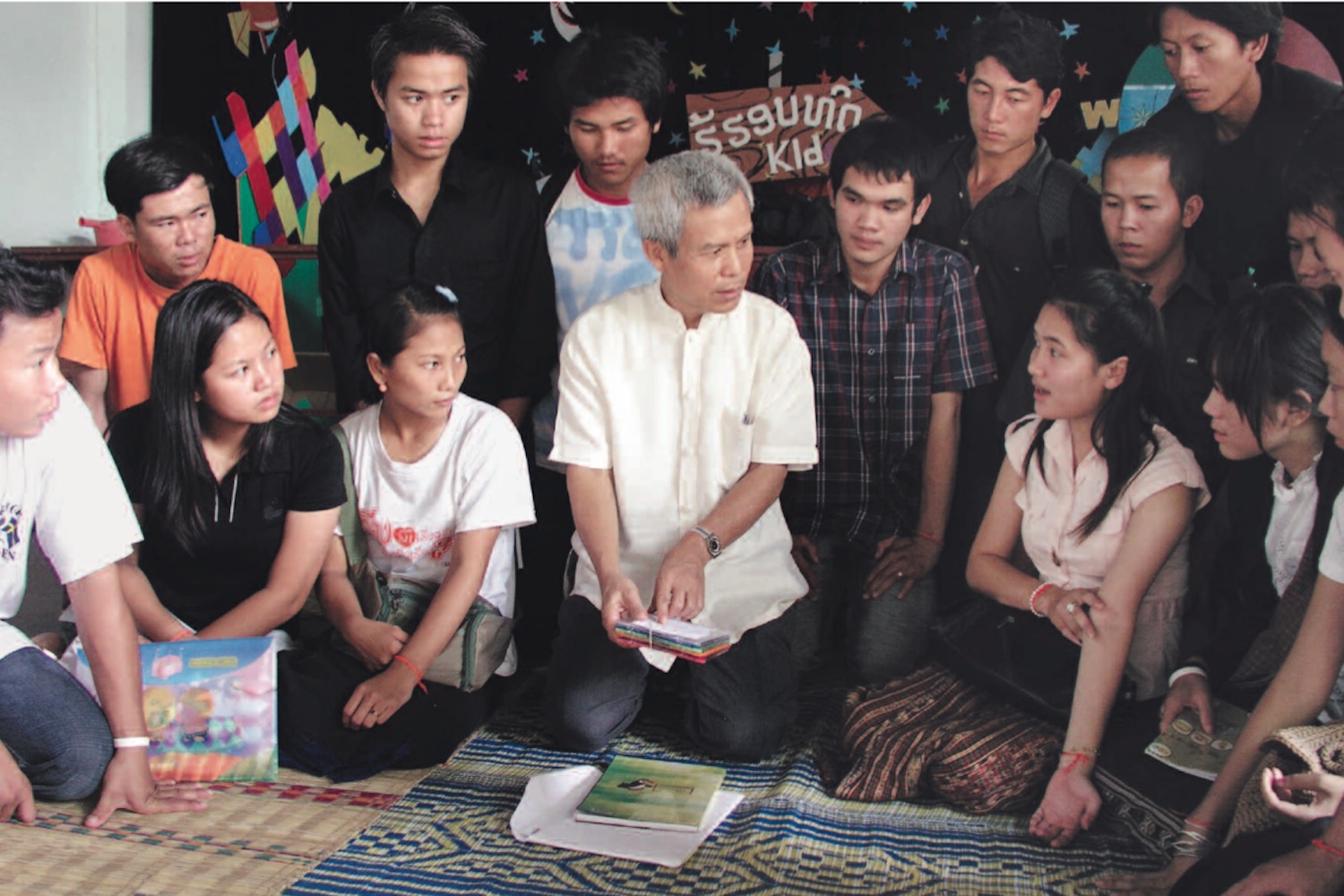By Kearrin Sims Asian Studies Review: 21 March 2022
Silencing of a Laotian son: the life, work, and enforced disappearance of Sombath Somphone, by Ng Shui Meng, Spirit in Education Movement & International Network of Engaged Buddhists, 2022, US$10.00 (paperback), US$5.00 (eBook)
On 15 December 2012, Sombath Somphone was abducted at a police checkpoint in the Lao capital of Vientiane. The victim of an enforced disappearance, his whereabouts remains unknown.
In Silencing of a Laotian Son, Ng Shui Meng provides a moving memoir of Sombath’s life, work and disappearance. Beginning by detailing the circumstances of his abduction, the book then shifts back to Sombath’s childhood to provide a chronological biography that charts his life experiences across Laos, the United States and Singapore. Later chapters discuss many of the efforts that have been made to locate Sombath since 2012, as well as the unrelenting stonewalling of these efforts by the Lao People’s Revolutionary Party (LPRP).
At times the book is heartbreaking. How can an internationally respected community development worker be abducted in the presence of police, this abduction be recorded by CCTV video footage, and still nobody be held accountable? The gravity of this injustice is unsettling to read.
Yet alongside the recounting of Sombath’s disappearance, Ng Shui Meng offers some fascinating reflections on Lao history, society and culture, as well as on community development. Regarding the latter, Sombath’s diverse development works were often ahead of their time and have provided many valuable insights for others working on sustainability, livelihoods, human development, wellbeing, culture and development, and assets-based approaches (see Chapters 7–10 and 13). Snapshots of these insights are captured in the book both through summaries of Sombath’s work, and by three annexes of his speeches.
Particularly fascinating is a summary of Sombath’s ‘3H – head, hands, heart’ education system (131), which emphasised critical thinking, practical skills and the cultivation of compassion and mindfulness. This holistic approach to learning, and its associated emphasis on engaging diverse community members as educators, formed the basis of many successful projects across Laos. The 3H model, and other aspects of Sombath’s thinking on development that are detailed in the book, should be read widely by development students, scholars and practitioners.
While this is not an academic book, even for scholars of Laos there is much to be learnt from a careful and reflective reading. Numerous illuminating insights are provided into rural Lao life via a personal, biographical history that traverses the Second Indochina War and the growth of Laos as an independent, post-colonial nation-state. Telling insights into the functioning of the party-state system are also presented (124), as are some brief insights into gender norms in Laos and familial relations.
As somebody already familiar with the circumstances of Sombath’s disappearance, there were three aspects of the book that I found most interesting. First, to pursue his education Sombath lived with many different host families over the course of his life (see 28, 30, 37, 48, 62). These experiences likely played a significant role in shaping Sombath’s personality and speak to many of his character traits discussed throughout the book – that he was people- oriented, willing to take risks, and able to find a common humanity across cultural and political differences.
Second, Sombath’s life experiences demonstrate the complex ways in which the life of an individual can be touched by global geopolitics. Sombath was outside Laos studying in the US during the Second Indochina War and this geographical distance from the conflict likely contributed to his ability to seek political neutrality and avoid siding with either the LPRP or the Royal Lao government (see Chapter 5). Regardless of one’s personal views, however, an individual cannot entirely control how they are perceived by others. Suspicions regarding Sombath’s political positioning from both sides of the political divide also had a significant influence on his life, including a brief period of re-education in Laos (69). The difficulty of claiming political neutrality will likely resonate with diverse audiences across the globe whose lives are being politicised in ways that are beyond their control as a result of current global political tensions between China and the US, Russia and Europe, and myriad other conflicts.
Third, the work of the Spirit Education Movement described in the book showcases a very different form of regional development initiatives within Mainland Southeast Asia to that of the grand-scale connectivity agendas of the Asian Development Bank’s Greater Mekong Subregion, China’s Belt and Road Initiative, and the Association of Southeast Asian Nations. Such grassroots and people-centred approaches to regional cooperation and devel- opment are often overshadowed by the regional programmes of larger actors and should be the subject of more academic analysis.
If I were to search for a criticism of the book, it would be that small sections of the text may have been better kept for the author’s own personal records, as well as for Sombath’s family. Fragments emphasising Sombath’s strong character give the book a more personal feel but may not be of interest to all audiences.
Silencing of a Laotian Son is a touching affirmation of love and a potent reminder to treasure the time spent with those dearest to us. It is a courageous book – the author still lives in Vientiane – that exhibits the wide contributions that Sombath Somphone made to the people of Laos.
Kearrin Sims is a critical development scholar trained in sociology and international relations. Kearrin examines the uneven ways in which development projects and interventions are encountered and experienced by vulnerable communities. This includes a focus on knowledge-power relations between development stakeholders, and an analysis of how processes of development produce new forms of marginalization and disadvantage. He also focuses on Asian regionalism and the intensification of south-south cooperation within the region.
